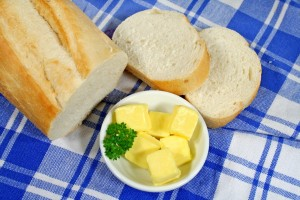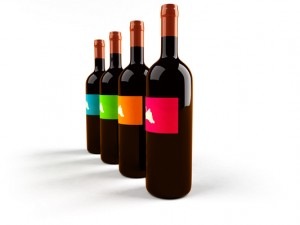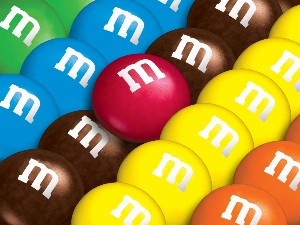 Shiny Packets And Small Pots
Shiny Packets And Small Pots
It used to be only butter on bread – big slabs, small pots, or foil wrapped rectangles. You can still find all of these – what would a diner be without those sometimes rock hard, sometimes soft and squishy, gold or silver foil wrapped butter packets?
Butter or Oil?
Olive oil for bread sopping and dipping is giving butter some stiff competition. Olive oil arrives green or golden, plain, herbed or spiced. It can be plopped down on your table, or poured with flourish from a dark tinted bottle. Some restaurants offer a selection for dipping – and attempt to educate you about the variation in flavors depending upon the olives’ country of origin.
How Many Calories?
Do you eat more calories from one or the other? Hidden cameras in Italian restaurants showed that people who put olive oil on a piece of bread consumed more fat and calories than if they used butter on their bread. But, the olive oil users end up eating fewer pieces of bread than the butter eaters.
In the study, done by the food psychology laboratory at Cornell University, 341 restaurant goers were randomly given olive oil or blocks of butter with their bread. Following dinner, researchers calculated the amount of olive oil or butter and the amount of bread that was consumed.
How Much Butter, How Much Oil, How Much Bread?
Adult diners given olive oil for their bread used 26% more oil on each piece of bread compared to those who were given block butter, but they ended up eating 23% less bread in total.
The researchers found:
- Olive oil users used 26% more olive oil on each slice of bread compared to block butter users (40 vs. 33 calories)
- Olive oil users ate 23% less bread over the course of a meal than the people who used butter
The olive oil users had a heavier hand than the butter users – for individual slices of bread. However, over the course of the meal when the total amount of bread and either oil or butter was accounted for, the olive oil users used more per slice, but, overall they ate less bread and oil over the course of the meal.
They also took in 17% fewer bread calories: 264 calories (oil eaters) vs. 319 calories (butter eaters).
Butter, Oil, And Bread Add Significant Calories
- A tablespoon of olive oil has 119 calories, a tablespoon of butter has 102 calories, one pat of butter has around 36 calories.
- Butter and oil are all fat; olive oil is loaded with heart healthy monounsaturated fat, butter is filled with heart unhealthy saturated fat
- Bread varies significantly in calories depending on the type of bread and the size of the piece
- Most white bread and French bread averages around 90 to 100 calories a slice. Most dinner rolls average 70 to 75 calories each.
What’s Your Bread And Butter (or oil) Plan?
The bread and butter or olive oil pre-dinner (and maybe during dinner) ritual can create a real caloric bump without much nutritional value. So many of us chow down mindlessly on bread and butter or oil before a meal – because we’re hungry – or because it’s there for easy nibbling.
Choose to eat it, limit your amount, or don’t let the breadbasket land on your table. The choice is yours – just be mindful of the calories.



